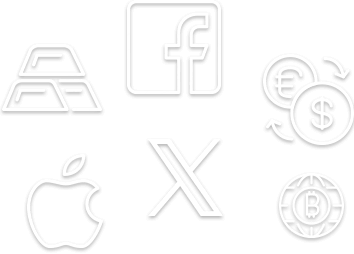Fund managers and financial traders need a way to gauge the performance of their portfolios. Therefore, they compare those performances with standardized reference points called benchmarks. Each benchmark applies to a different market or sector, so, for instance, the benchmark for American stocks is the S&P 500 index, while the benchmark for the technology sector is the Nasdaq 100 index. Learning about the various benchmarks for Forex trading can assist you in setting up your deals in an ideal fashion.
Fund managers frequently boast that their portfolios have beaten a relevant benchmark. This is because:
- It seems to prove their skill in navigating the markets, thus drawing in new customers
- It appears to justify the management fees they charge clients
- Thus, in 2022, Ren Leggi of the tech-focused ARK Invest fund declared that: “If you look at the S&P 500 and the Nasdaq-100… [ARK] investors with a five-year time horizon have actually outperformed both of those indices 100% of the time”.

A trader might claim that his strategy “beat the S&P 500 by 6% last year”, but you should take this with a pinch of salt because:
- This may have been true over a single year, but when taking the previous three or five years into account, it’s likely the S&P performed better
- The risk taken on by the trader in order to produce that return may have been excessive
- If the trader’s strategy was based on tech shares, it would be more correct to compare it with the tech-focused Nasdaq 100 index than a broad stock index like the S&P 500
A small-cap CEO might claim his stock outperformed the Russell 2000 Index (used to assess the performance of small-cap firms) over the past year. However, bear in mind that:
- The Russell 2000 measures the average price of small-cap stocks. Outperforming it doesn’t imply you have done better than other small-cap stocks in the market
- The CEO isn’t mentioning the volatility cycles his stock has undergone within the period
- Benchmarks refer to past data, not the present. There’s no guarantee his stock will perform similarly this year
The standard benchmark in the forex trading world is the WM/Refinitiv rate. This is different to other sorts of benchmarks because:
- Calculated using quote datIt is not used to evaluate the performance of a trading strategy or fund
- Calculated using quote data from several trading platforms, it functions as the standardized rate for any given forex pair at the moment of publication. The most important release is the 4 p.m. London fix.
- The WMR is used to gauge the effectiveness of large forex trades made by institutions. For example, a US-based fund holding European stocks might report returns in USD with the use of the WMR 4 p.m. EUR/USD fix rate
Conclusion
- Benchmarks are an integral part of financial trading, but using them effectively requires knowledge and understanding
- The WMR forex benchmark is essentially different from popular stock and commodity benchmarks
- Sign up with iFOREX Europe today to access their specialized array of educational resources

FAQs
What’s an example of using the WMR London fix to set up a forex trade?
Since large institutions convert currencies at the 4 p.m. fix, traders know to expect high volumes to hit the market at that time. This often causes price spikes in major pairs like EUR/USD or USD/JPY just before that hour arrives.
- You start monitoring EUR/USD from 3.45 p.m. London time, and see prices rise strongly at 3.57 p.m.
- Therefore, you open a long position on the EUR/USD at 3.58 p.m.
- At 4.01 p.m., the EUR/USD spikes. You close your trade and collect your earnings
What’s a good benchmark for commodities trading?
The Bloomberg Commodities Index tracks 24 commodities from all categories, and is widely relied upon by both institutional and retail traders around the world.
What’s the most popular benchmark for emerging market (EM) equities?
The MSCI (Morgan Stanley Capital International) Emerging Markets Index. Covering 24 EM countries including Brazil, Mexico, and South Africa, the MSCI Index is used to assess the performance of EM stocks. Institutional funds based on EM equities compare their own performances with the MSCI, while it is also frequently looked to by financial analysts and the media.
iFOREX Europe sets you up for financial trading by:
- Enhancing your understanding of trading concepts through its educational materials, which come in both written and video form
- Allowing you to engage one-on-one with a real human support person
- Staying in close contact with customers by phone, email, and chat


